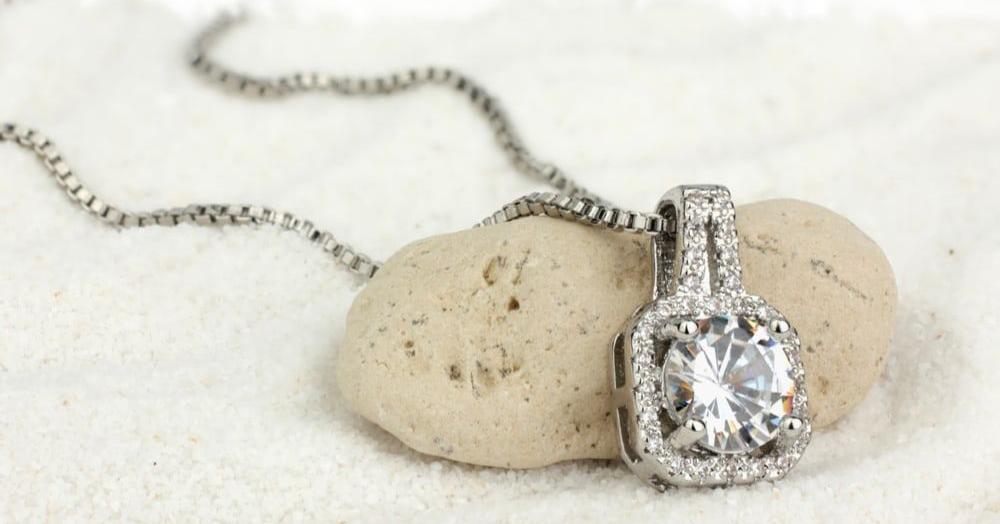Are you curious to know what is composite diamonds? You have come to the right place as I am going to tell you everything about composite diamonds in a very simple explanation. Without further discussion let’s begin to know what is composite diamonds?
Diamonds have long captivated us with their unparalleled beauty and enduring allure. In recent years, a new innovation has emerged in the diamond industry: composite diamonds. These diamonds, also known as hybrid or composite hybrid diamonds, offer a fascinating blend of natural and lab-grown elements. In this blog post, we will explore the world of composite diamonds, shedding light on their composition, creation process, characteristics, and their place in the realm of fine jewelry.
What Is Composite Diamonds?
Composite diamonds are diamonds that combine natural diamond material with lab-grown diamond or other gemstone enhancements. They are created by carefully fusing natural diamond slices or fragments with laboratory-grown diamond material. This process allows for the production of unique and visually striking gems that possess the remarkable properties of both natural and lab-grown diamonds.
Composition And Creation Process:
Composite diamonds are made by bonding thin slices or fragments of natural diamonds with lab-grown diamond material using advanced techniques. The natural diamond component provides the authenticity and inherent properties of a genuine diamond, while the lab-grown diamond element adds size, clarity, or color enhancements.
The creation process involves meticulous craftsmanship and cutting-edge technology. Diamond artisans carefully select and arrange natural diamond pieces to create a desired pattern or design. The natural and lab-grown diamond components are then subjected to high pressure and high-temperature conditions, which promote the fusion and bonding of the materials.
Characteristics And Benefits:
Composite diamonds possess unique characteristics that make them distinct from both natural and lab-grown diamonds. Here are some notable features and benefits:
- Enhanced Appearance: Composite diamonds often exhibit extraordinary visual effects due to the combination of natural and lab-grown diamond materials. The fusion of different colors, patterns, or even diamond shapes can create mesmerizing and one-of-a-kind designs, making each composite diamond truly unique.
- Sustainability: Composite diamonds contribute to sustainable practices in the diamond industry. By utilizing natural diamond fragments or slices, composite diamonds make efficient use of existing resources, reducing the need for additional mining. This aligns with the growing emphasis on ethical sourcing and environmental responsibility.
- Affordability: Composite diamonds offer a more accessible option for individuals seeking larger or more visually striking diamonds. The combination of natural and lab-grown diamond elements allows for cost-effective production while still providing a stunning gemstone with desirable qualities.
- Durability and Authenticity: The natural diamond component in composite diamonds ensures the gemstone’s inherent hardness, durability, and authenticity. The lab-grown diamond enhancements, on the other hand, can contribute to improved clarity or color, enhancing the overall appearance of the composite diamond.
The Place In Fine Jewelry:
Composite diamonds have carved a niche for themselves in the world of fine jewelry. They offer a creative and visually captivating alternative to traditional diamond options. Their unique designs and affordability make them an attractive choice for individuals seeking distinctive pieces that combine the allure of natural and lab-grown diamonds.
It is important to note that composite diamonds should be disclosed and labeled accurately to ensure transparency and informed consumer choices. Jewelry professionals and retailers play a vital role in educating customers about the composition and characteristics of composite diamonds, enabling them to make informed decisions when purchasing these extraordinary gems.
Conclusion:
Composite diamonds represent a captivating innovation in the diamond industry, seamlessly blending natural and lab-grown diamond elements to create striking and unique gemstones. With their enhanced appearance, sustainability, affordability, and durability, composite diamonds have found their place in the realm of fine jewelry. As they continue to capture the imagination of jewelry enthusiasts, composite diamonds stand as a testament to the ongoing evolution and ingenuity within the world of diamonds and gemstones.
To figure out such kinds of things on DeleteBy
FAQ
Are Composite Diamonds Good Quality?
Compared to other options on the market, such as cubic zirconia and moissanite , composites diamonds have a much higher quality appearance at a fraction of the price . Another advantage is their durability.
What Is The Difference Between Diamond And Composite Diamonds?
Composite diamonds are small diamonds that have been carefully placed together to create a larger-looking diamond. They may be set in a way that makes them appear as one stone or arranged in a design to maximize their beauty or sparkle.
Is Zales Real Diamonds?
Zales’ lab-created diamonds are grown in state-of-the-art facilities and then cut and polished to the highest standards. The main advantage of Zales’ lab-created diamonds is that they are much less expensive than naturally mined diamonds, allowing customers to own a beautiful diamond without breaking the bank.
What Are Diamonds That Are Fake But Look Real?
Cubic Zirconia
They’re so commonly used as a diamond look-a-like that many people will cite that all non-naturally occurring diamonds are fake diamonds are called cubic zirconias. Cubic zirconia is a lab-made synthetic substance composed of zirconium dioxide.
I Have Covered All The Following Queries And Topics In The Above Article
What Is Composite Diamonds
What Is Composite Diamonds
Are composite diamonds real or fake
What are composite diamonds?
